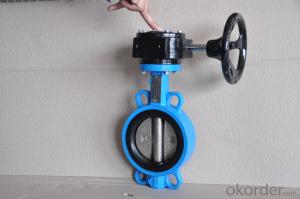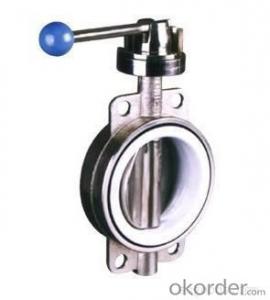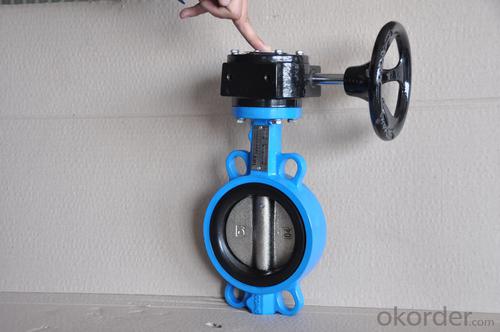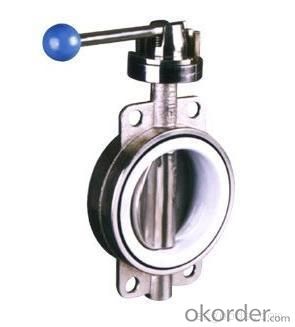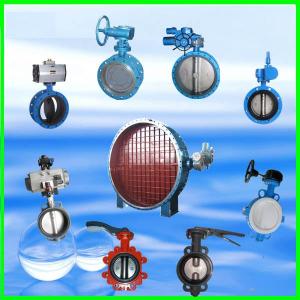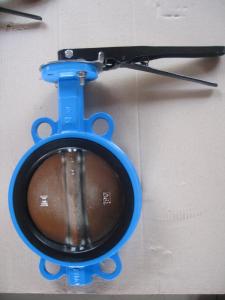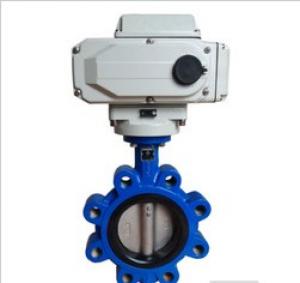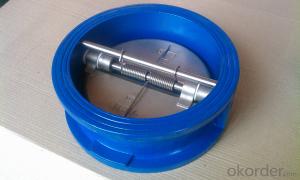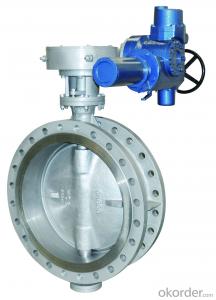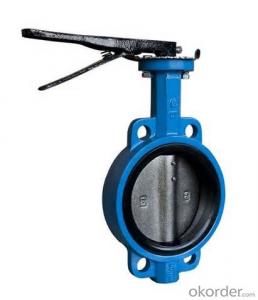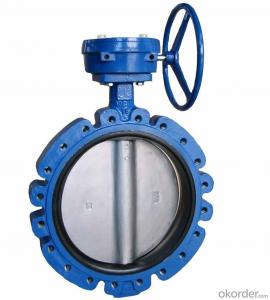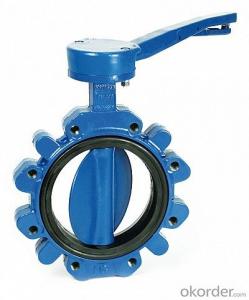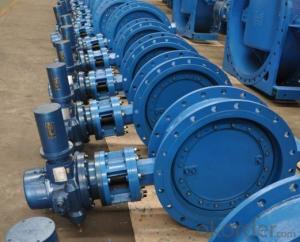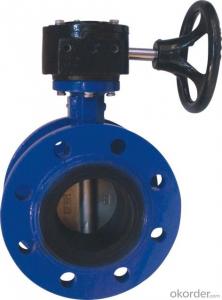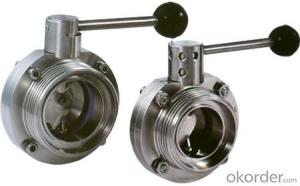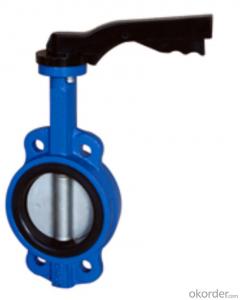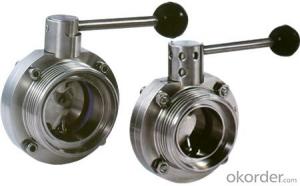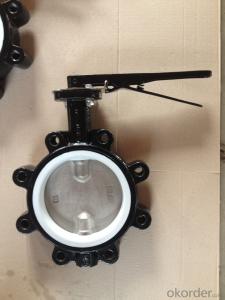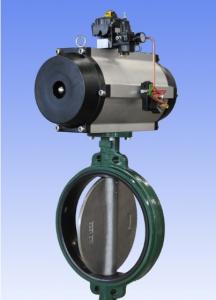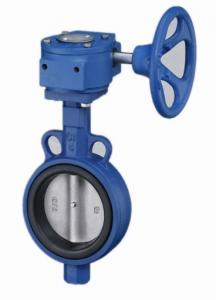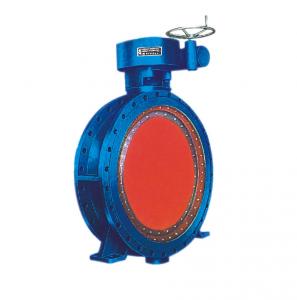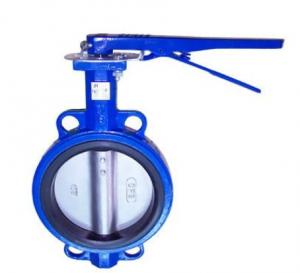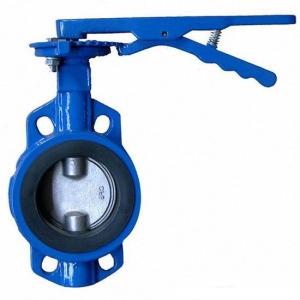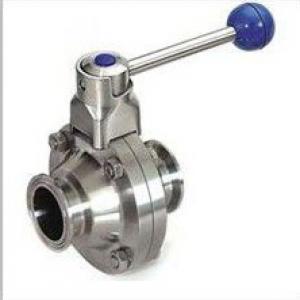Butterfly Valve Ductile Iron Cast Iron Can be Customised High Quality
- Loading Port:
- China main port
- Payment Terms:
- TT OR LC
- Min Order Qty:
- 5000 pc
- Supply Capability:
- 50000 pc/month
OKorder Service Pledge
OKorder Financial Service
You Might Also Like
1. Manual Wafer Butterfly Valve Description:
The products are widely used in industries such as water projects, urban water supply & drainage, sewage treatment, eletric power, petroleum, petrochemical, heat supply, shipbuild-ing,medicine and metallurgy. Equipment used in regulating or cutting off medium in pipeline
2.Main Features of the Manual Wafer Butterfly Valve
Quick DetailsStandard or Nonstandard: Standard Structure: Gate Pressure: Medium Pressure
Power: Manual Material: Casting Temperature of Media: Medium Temperature
Media: Water Port Size: DN40mm-DN300 Place of Origin: China (Mainland)
Model Number: CMAX-GF4 resilient gate valves: resilient seat flange
Packaging & DeliveryPackaging Detail: air plastic bag inside/wooden box outside
Delivery Detail: 15-60days
3. Manual Wafer Butterfly Valve Images:
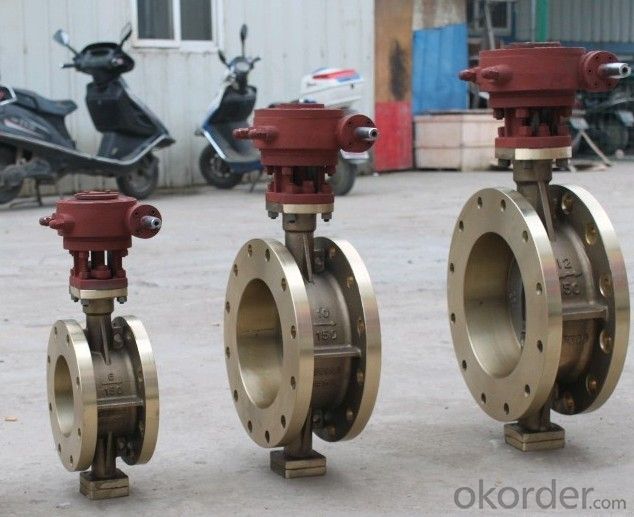
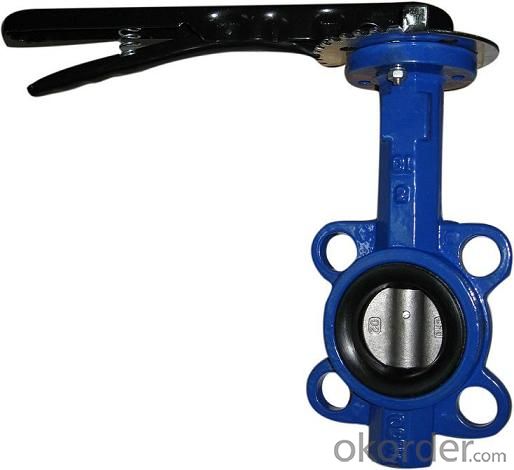
4.Manual Wafer Butterfly Valve Specification:
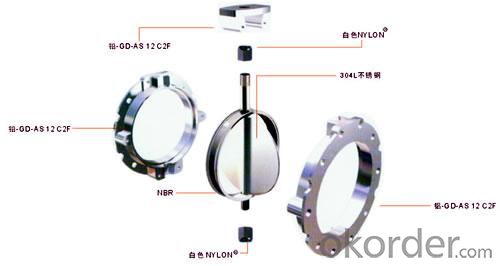
5.FAQ
1. How about the Installation of the Wafer Style Butterfly Valve?
A: Butterfly valves are installed by inserting the valve between two flanges using bolts or studs and nuts to hold it all together. This type of installation, of course, makes it impossible to disconnect just one side of the piping system from the valve. That benefit is received using the lug style valve.
2. What is manual wafer butterfly valve?
A: Wafer style is the more common of the two and is less expensive than the lug style. The wafer style butterfly valve is just about the standard. It ís so common that no one even bothers to use the word "wafer" when ordering a butterfly valve. It is taken for granted that if a butterfly valve is ordered, a wafer style will be received.
3. What is the working principle of manual wafer butterfly valve?
A: A butterfly valve is from a family of valves called quarter-turn valves. In operation, the valve is fully open or closed when the disc is rotated a quarter turn. The "butterfly" is a metal disc mounted on a rod. When the valve is closed, the disc is turned so that it completely blocks off the passageway. When the valve is fully open, the disc is rotated a quarter turn so that it allows an almost unrestricted passage of the fluid. The valve may also be opened incrementally to throttle flow.
- Q: What does "D341X-16Q" mean?What do D341-16Q letters and numbers mean for butterfly valves?
- D - valve type code: Butterfly valve;3 - valve drive mode code: worm gear;4 - valve connection form code: flange;1 - valve structure type code: vertical plate type;X - seat sealing surface or lining material code: rubber;16 - nominal pressure value: PN1.6MPa;Q - body material code: QT400 - 15.
- Q: Have an iron block, aluminum heads, solid roller lifters, Jessel rocker shafts, what should my valve clearances be cold, and hot??
- Your cam dictates the valve lash. What cam is in this engine? Contact the cam company. Most have on-line tec support or a 1-800 customer service department.
- Q: The difference between the electric control valve and the electric butterfly valve, respectively, the application situation
- Electric butterfly valve is a kind of electric control valve.There are many types of valve body, usually through the single seat, straight through two seat, angle, diaphragm, small flow, three pass, eccentric rotation, butterfly, sleeve type, spherical and so on 10. In the selection of control valve valve prior to the media, process conditions and parameters to control the process of careful analysis, to collect sufficient data to understand the system requirements on the control valve, according to the data collected to determine the type of valve to be used.
- Q: Butterfly valve is the control valve?
- The flow characteristics of butterfly valves can be approximately equal percentage characteristics, with the positioner can do adjust, is mainly used in large caliber, straight stroke control valve more than 200 volume weight will be great, it suggests using the butterfly valve.
- Q: oil coming from valve into turbo charger
- Diesels do not have pcv valves. Pcv valve are on gas engines only.
- Q: i was changing valve seals and two dropped i can see the head of the valve but a magnet wont pull them up i put air the spark plug hole too but no luck 1985 ford bronco II
- Your going to have to pull the heads.
- Q: My bike has now 6200 miles on the odometer. The manual says that a valve adjustment should be performed every 6000 miles. But the bike runs fine. Can I just have the valve checked or should I have them adjusted even though the bike is fine? What will happen if I just keep riding it?
- First off you are suppose to take your bike back to have your valves adjusted after 500 miles. Anything later can cause problems. The motor is already broken in. why did you wait so long to have them adjusted ? Your vibration is the tire is not balanced right , take it else where. good luck
- Q: What does "D41X-16" mean?
- There are many kinds of valves, so each valve has a specific model. Butterfly valve D41X-16 code D refers to the butterfly valve, 4 refers to the connection form is flange, 1 refers to the drive mode is manual, X is the valve sealing ring material is rubber, 16 refers to pressure, 16 kg. Valve model is composed of seven elements: valve type, connection form, drive mode, structure, sealing ring material, nominal pressure, material. You can ask me if you don't understand. Dual valve []
- Q: Which is better, the round two lobe butterfly valve?
- Round type double butterfly butterfly valve is the first choice of Shanghai Machinery & Equipment Co., Ltd., the company is a professional design, manufacture and sale of central air-conditioning products at the end.
- Q: e.g. a patient with a prosthetic aortic valve and a patient with a prosthetic mitral valve. Also, can you get stenosis of mechanical valves or just tissue grafts?Thanks!
- mechanical okorder /
Send your message to us
Butterfly Valve Ductile Iron Cast Iron Can be Customised High Quality
- Loading Port:
- China main port
- Payment Terms:
- TT OR LC
- Min Order Qty:
- 5000 pc
- Supply Capability:
- 50000 pc/month
OKorder Service Pledge
OKorder Financial Service
Similar products
Hot products
Hot Searches
Related keywords
